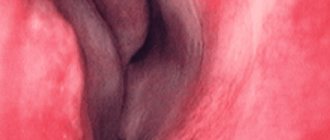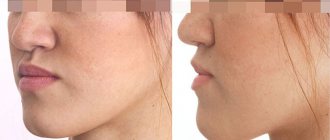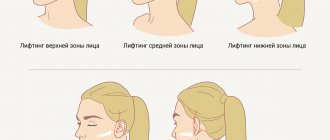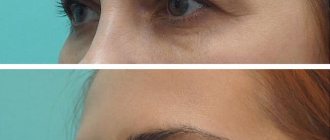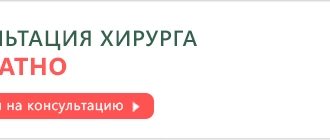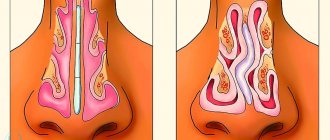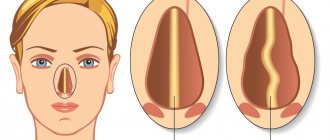Nasal breathing is very important for a person, because it ensures the full functioning of all internal organs. Any pathological changes in the functioning of the respiratory system can lead to serious disruptions in the functioning of the body.
Difficulty in nasal breathing is a very common problem with which patients very often come for consultation with an otolaryngologist. In most cases, impaired nasal breathing occurs due to rhinitis (vasomotor, allergic, drug). With this disease, inflammation of the mucous membrane occurs, which is accompanied by swelling and partial/complete blockage of the nasal passages. Vasotomy is a surgical intervention aimed at reducing enlarged nasal turbinates and eliminating blood stagnation in the vessels of the nasal turbinates, which helps relieve swelling and restore impaired nasal breathing
Vasotomy of the nasal turbinates in a medical clinic in Moscow
Medical is a multidisciplinary clinic where you can undergo a comprehensive health examination and receive qualified and effective treatment at an affordable cost. We have the best doctors who are ready to provide you with all the necessary medical care at any time.
There are various methods of plastic surgery of the inferior turbinates, which are aimed at reducing their volume while preserving the important structure of the turbinate, namely the mucous membrane covering it. The inferior nasal turbinates are an important structure of the nasal cavity involved in warming, moisturizing and purifying the air entering the lungs, therefore a careful and dosed effect on them is necessary under the control of endoscopic technology.
Radio wave vasotomy - this method is widely popular, as it is the most gentle and effective and is performed on an outpatient basis. A special nozzle is applied to the hypertrophied area and a radio wave is applied, which steadily contracts (scleroses) the vessels of the submucosal layer of the inferior turbinates. With radio wave vasotomy, the risk of intra- and postoperative nosebleeds is minimized, since the soft tissues are minimally injured when performing manipulations. But this method is not suitable if there is true bone hypertrophy (overgrowth) of the inferior turbinates, since partial bone removal requires the use of instruments that are used only in a hospital setting. Shaver plasty is performed in a hospital setting using modern video endoscopic equipment, which allows you to fully control the entire course of the surgical intervention and perform all manipulations with extreme precision. Using a shaver, pathological hypertrophied areas of the mucosa or areas of the submucosal layer are carefully cut off and aspirated. This method is considered low-traumatic.
All about septoplasty: indications, effectiveness, results
What you need to know about septoplasty?
If the patient had to face such a problematic diagnosis as a crooked nose, then the key procedure that can eliminate this defect can only be septoplasty. This is an effective surgical operation aimed at correcting the shape of the nasal septum. It is important to understand that this procedure does not involve a radical change in shape. Its goal is primarily health improvement, and the aesthetic aspect is brought into the background.
When is septoplasty necessary?
The nasal septum is a kind of plate consisting of two parts - cartilaginous and bone. It divides the nasal cavity into two parts. At first glance, it may seem quite logical that the nasal septum is almost flat, and, therefore, the two halves of the nasal cavity should be symmetrical. In fact, this is not entirely true, because the septum is distinguished by the presence of bends, so-called “outgrowths”, called “ridges” or “spikes” by doctors. According to doctors, the most common form of deformation is deviation to the left or to the right.
Causes of curvature may include:
- birth trauma (dislocation at birth);
- various types of disorders of the formation of the facial skeleton, especially during early childhood and adolescence;
- injuries;
- presence of neoplasms;
- violation of the anatomy of the nasal parts;
- the presence of foreign bodies in the nasal cavity.
For many years, such a diagnosis may not manifest itself. Even significant deformation does not cause severe symptoms. In such cases, further diagnosis may become somewhat more complicated, so if the slightest changes are detected, it is worth consulting with a specialist.
How does a deviated septum manifest and how dangerous is it?
Failure to consult a doctor in a timely manner can lead to unpleasant sensations that manifest themselves at the level of functioning of many vital systems. The list of symptoms is quite long.
Difficulty in nasal breathing
The degree of manifestation of this symptom can be radically different: from a moderate, almost imperceptible disturbance, to significant difficulties in breathing, up to its complete impossibility. Most often, such symptoms are caused by a unilateral curvature, which causes difficulty breathing in the corresponding half. It is important to determine whether the curvature is the only cause of the disease, and whether there are other factors that impede air flow. This symptom is most common in older people.
Chronic sinusitis
It occurs due to curvature of areas of the septum, which, in turn, cause insufficient ventilation of the paranasal sinuses. In simple words, conditions are created in the nasal cavity for the development of sinusitis, frontal sinusitis, sphenoiditis and other diseases, which often become chronic if the necessary measures are not taken in time.
Nosebleeds
The thinned mucosa is the area at the top of the spine that is most susceptible to injury. As a result, intense and sharp blowing of the nose can cause recurrent bleeding. It is also easy to provoke them even in the process of extracting dry mucus with your finger.
Hearing impairment
When air begins to flow poorly through the nasal cavity and nasopharynx to the respiratory tract, poor ventilation of the middle ear cavity may occur. Air does not reach the eardrum in sufficient quantities, which leads to the formation of tubootitis - an inflammatory process that develops in the auditory tube. It is highly not recommended to lead to such an outcome, since the disease is characterized by a sharp decline in hearing.
Pathologies of the pharynx and larynx
This kind of ailment is a consequence of one of the symptoms described above - impaired nasal breathing. Changes in the pharynx manifest themselves in chronic pharyngitis and tonsillitis, and among the common diseases of the larynx is chronic laryngitis. Poorly purified cold air enters the mucous membrane of the pharynx, larynx and tonsils, which provokes a chronic inflammatory process. To prevent the occurrence of such “traumatic” breathing, it is necessary to diagnose the root cause in time.
In addition to the listed symptoms, a deviated septum can cause frequent respiratory infections, accompanied by sinusitis and otitis media. Poor ventilation of the nasal cavity causes discomfort in the form of pain on the face and headaches. A nuisance such as snoring may also occur.
All these problems are indications for septoplasty. However, there are a number of limitations under which such surgical intervention is contraindicated. These include:
- poor blood clotting;
- diabetes;
- infectious diseases of various origins;
- oncological diseases;
- chronic diseases of the cardiovascular and respiratory systems during exacerbation;
- general unfavorable condition.
It is also worth noting that septoplasty also has some age restrictions. It is not recommended for patients who have not reached the age of majority. There is a completely logical explanation for this: bone and cartilage tissue are still not fully formed, and surgical intervention can aggravate the overall situation.
However, in some cases, surgery is the only treatment option. For example, when the inability to breathe fully affects the overall development of the child, both physically and mentally. The presence of significant indications is a sufficient reason to perform surgery from the age of 6 years. However, many otolaryngologists believe that surgical intervention can be practiced no earlier than 11 years of age.
Another age restriction for septoplasty concerns old age. During this period, difficulty breathing can cause considerable discomfort, but performing surgical interventions is also dangerous to health. In older patients, the risk of poor tolerance to anesthesia and, consequently, to the entire operation increases.
Types of septoplasty: which one to choose?
The nature of the curvature determines the choice of one or another treatment method. Today there are two of them:
- endoscopic;
- laser
Endoscopic septoplasty involves surgical manipulation by making small incisions in the nostril area. In this case, the soft tissues are peeled off, and the “extra” parts of the septum are removed. The septum itself is corrected by displacing cartilage or bone fragments. An endoscope is inserted into the nasal cavity - a tube with a diameter of up to 4 mm, which helps to monitor the progress of the operation to exclude possible injuries. In some cases, other interventions are provided. The operation ends with packing. Immediately after this, apply a cold compress.
Rehabilitation after endoscopic septoplasty involves the removal of tampons 2-3 days after surgery and a set of procedures regarding enhanced hygiene. It is necessary to remove the crust, as well as dried blood, by washing with a special liquid (this can be either sea water or saline). The doctor also prescribes ointment, spray or drops. To prevent infectious complications, you will need to take antibiotics.
During the rehabilitation period, it is necessary to avoid significant physical activity, and also not to visit the pool and sauna. In general, the occurrence of postoperative complications is very rare if you follow all the measures recommended by doctors.
Many people prefer laser septoplasty, in which the tissue is cut using a special safe laser. This technique has such advantages as bloodlessness, a minimum of rehabilitation measures and an antiseptic effect. The impact on tissue is minimal, and bleeding is stopped by cauterization.
But the patient does not always have the opportunity to choose, because the laser method, for example, is practically useless if it is necessary to manipulate bone tissue. Severe curvature can only be corrected using endoscopy. But it also does not carry any negative consequences in the form of scars, since modern medical technologies make it possible to do it quickly, painlessly and without visible traces of surgical intervention.
How to prepare for septoplasty?
First of all, you need to get professional advice from a doctor and be sure to tell him what medications you are currently taking. You may need to stop taking medications (for example, blood thinners). Women need to know that the operation can only be performed 7 days after the last menstrual period. Doctors include general recommendations that must be followed two weeks before septoplasty:
- quitting smoking and drinking alcoholic beverages;
- avoiding hypothermia;
- elimination of inflammatory foci that may interfere with surgical intervention;
- visiting the dentist;
- complete cure of infectious diseases.
Diagnosis of curvatures is carried out by inspection using special tools. In order to determine the degree of deformation as accurately as possible, an X-ray examination is often prescribed. In some cases, there may be a need for specialized examinations such as MRI, CT and video endoscopy (use of a camera to assess the condition of the mucosa). The list of tests that need to be taken includes an ECG, blood and urine tests, fluorography, coagulogram and others.
After discharge
Over the course of a month, the patient must visit an otolaryngologist who will monitor the progress of the rehabilitation period. In this case, it is necessary to independently take measures to prevent deformation. They do not exist as such, but every time a patient is going to take any medication, it is necessary to consult a doctor.
In many cases, it is possible to achieve not only anatomical, but also an aesthetic effect, although the second is not the primary goal of septoplasty. Today this is the most effective way to eliminate a deviated septum. The presence of two ways to carry out this procedure makes it possible to choose the one that can completely eliminate the flaw. As for prices, the endoscopic method is more affordable than the laser method, although the latter is in considerable demand.
When choosing one or another method of septoplasty, you can be sure that you are in good hands with the surgeons of our clinic. After the operation, you will finally take a deep breath and get that reflection in the mirror that you have long dreamed of! Take the first step towards your dream of a beautiful and neat nose - book a consultation with us by phone. Or write us a message via the feedback form - and we will definitely call you back and arrange an appointment.
Rehabilitation period
For several days after the vasotomy, nasal congestion will persist; this is a normal course of the postoperative period and should not cause a feeling of concern. During the week, you should follow the recommendations of the otolaryngologist:
- do not take hot baths, do not visit baths and saunas;
- exclude physical activity;
- take medications prescribed by your doctor.
You can make an appointment with an otolaryngologist and find out the price of vasotomy at the Stolitsa clinic by calling: 8(495)604-10-10.
Advantages of the method:
- Patients tolerate the procedure well.
- High efficiency and minimal trauma.
- There is no chance of developing nosebleeds.
- Nasal packing and pain medications are usually not required.
- Preservation of the function of the ciliated epithelium (this is the beating of the cilia of the epithelium and the movement of mucus through the nasal cavity).
- Tissue destruction when exposed to radio wave disintegration is several times less than when using any other electrosurgical instrument.
- Visual control of the electrode during manipulation allows you to adjust the area and depth of impact on the tissue.
The importance of the surgical technique:
It was previously thought that septoplasty could disrupt the normal structure of the face. This was due to the fact that an outdated surgical technique was used, which had existed since the end of the 19th century - a submucosal resection of the nasal septum was performed, the meaning of which was to separate the osteochondral skeleton of the nasal septum from the mucous membrane and completely remove the bone and cartilage. In this case, only the mucous membrane covering the nasal septum was preserved. After such operations, a saddle-shaped deformity or “dropping” of the nose very often occurred due to the deprivation of the supporting function of the septum, and there was also a high risk of developing perforation - a hole in the septum with constant formation of crusts. Unfortunately, some surgeons still use this technique.
There are also contraindications:
- Acute infectious diseases.
- Pregnancy period.
- Chronic diseases in the stage of decompensation.
- Oncological diseases.
- The patient has a pacemaker.
At ENT Clinic No. 1, highly qualified specialists will conduct a full, detailed examination of the ENT organs using video endoscopic equipment, choose the right tactics for the operation, carry out the procedure as comfortably as possible for the patient and ensure the correct approach during rehabilitation.
Preparation for the procedure
Vasotomy is a small operation, but still an operation. To avoid complications and identify possible contraindications, you need to be examined in advance.
What you need to do before treatment:
- general blood analysis;
- Ultrasound of the nasal sinuses;
- rhinoscopy (examination of the cavity using a rhinoscope);
- ECG.
This preparation allows you to choose the optimal type of anesthesia, as well as ensure that the prescribed procedure is correct.
2 weeks before surgery, it is recommended to stop taking painkillers, anticoagulants and alcohol.

